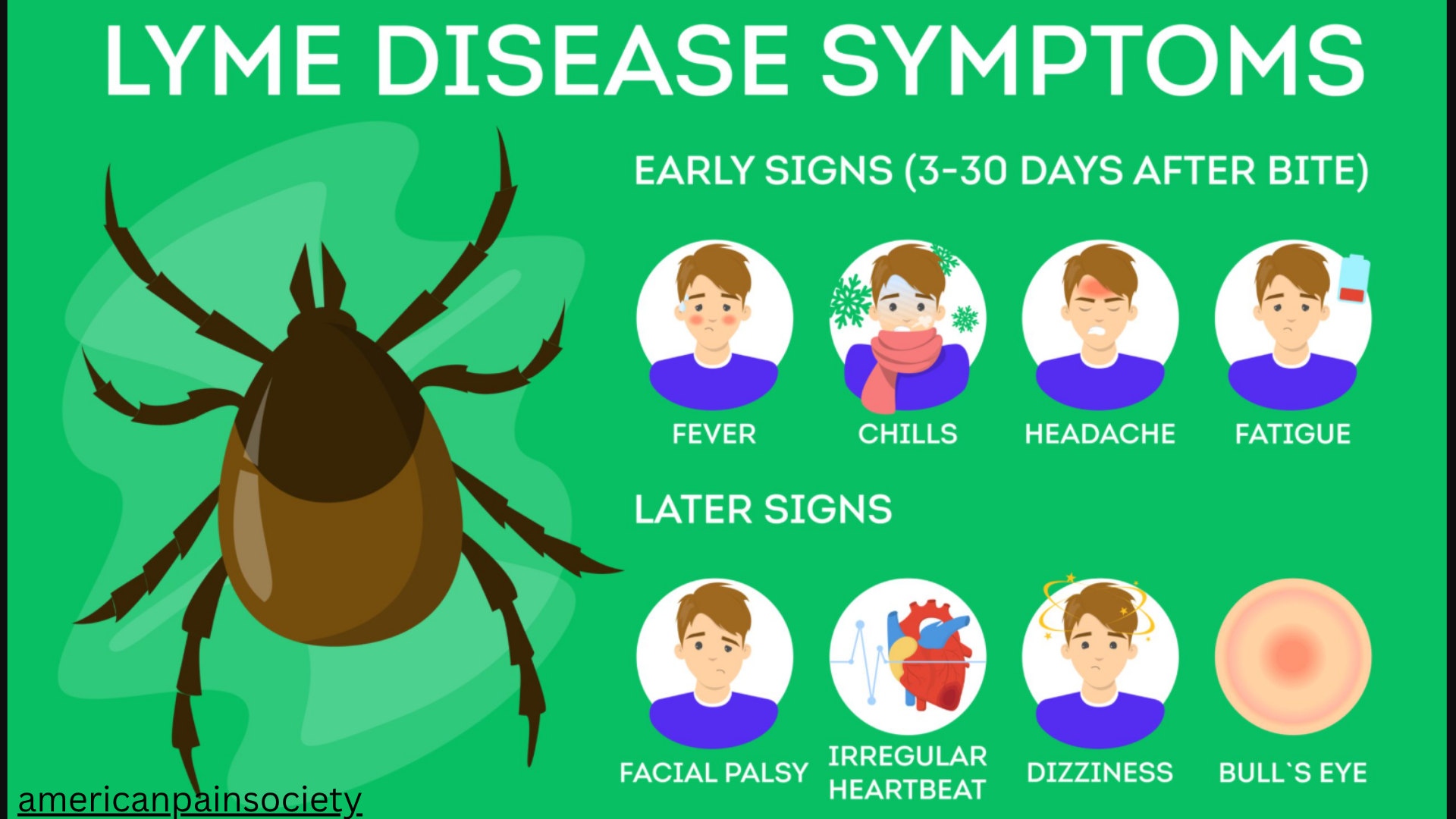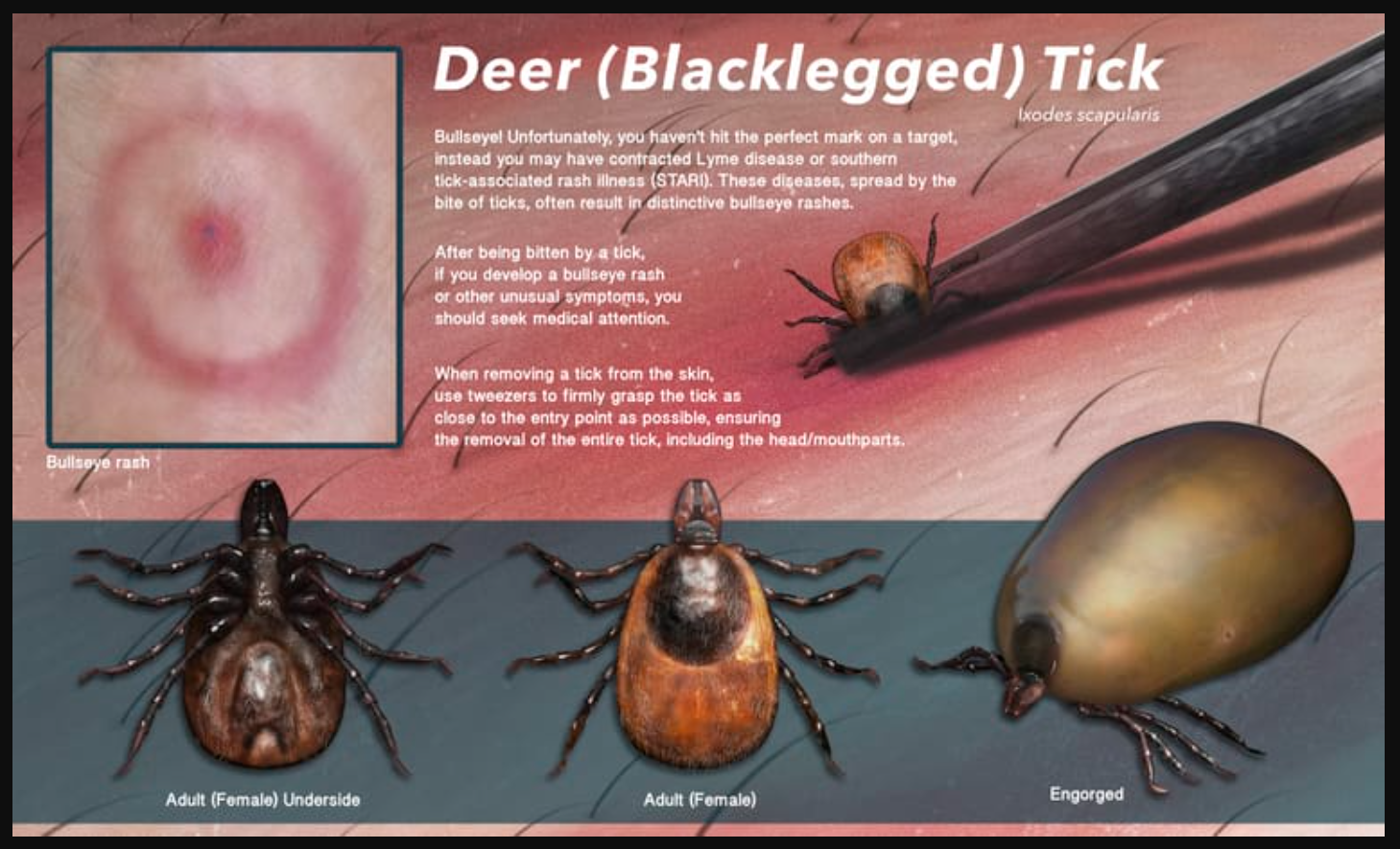
Lyme disease is a bacterial transmitted disease caused by infected tick bites. The bacteria are known as Borrelia burgdorferi, and they travel through the black-legged ticks, which are also known as deer ticks. Early detection of the illness can be helpful, or else it can cause prolonged complications if left untreated. The toughest part of this illness is that it can mimic characteristics of other health diseases that can cause difficulty in early analysis.
Through this article, you can collect all the information about Lyme disease symptoms and its early signs, symptoms, and diagnosis to let the patient and the caregiver get proper guidance.
What is Lyme disease?
Lyme disease is a vector-borne illness that is common in several parts of Asia, Europe, and the united States. These ticks thrive in grassy or forested areas. If the infected ticks get attached to the skin for 36 to 48 hours, they can transmit the bacteria directly to the bloodstream.
The most common sign of early Lyme disease is a bull’s-eye rash, which is also known as erythema migrans (EM). In some cases, this rash is not visible, even though the person is infected.
Incubation period of Lyme disease
The virus takes 3 to 3o days to show symptoms after the bite of an infected tick. This illness goes through three phases:
- Early localized
- Early disseminated
- Late disseminated
All three stages come with different symptoms that go from mild to chronic.
Stage 1: Symptoms of early localized Lyme disease
This is the first stage that follows a tick bite. This is the duration between a few days and weeks, during which you can diagnose and treat early.
Common symptoms:
- Erythema Migrans (EM) Rash
- The EM rash typically appears in three to fourteen days, at the bite spot.
- Spreads and expands in time and might get up to 12 inches.
- The rash looks like a circular patch with a clear center that resembles a bull’s eye.
- The bite site does not feel itchy or painful, but feels warm on contact.
- Flu-like symptoms
- Fever
- Headache
- Fatigue
- Chills
- Inflamed lymph nodes
- Muscle pain
Sometimes there is no rash, but the person can experience flu-like symptoms, causing a misunderstanding with viral flu.
Stage 2: symptoms of early disseminated Lyme disease
If you fail to diagnose and treat Lyme disease at its early stage, then it can spread in the bloodstream. This phase grows after a few weeks to months of tick bite. The bacteria get enough time to spread to other areas of the body, such as the nervous system, heart, and joints. So, it is essential to detect it sooner than it spreads to other areas of the body.
Some of the symptoms of early disseminated Lyme disease are:
- numerous rashes
- Apart from the bite site, several EM rashes may appear in other body parts.
- Layme disease neurological symptoms
- Symptoms like meningitis: mild sensitivity, stiff neck, and severe headache.
- Facial palsy: drooping of the face on one or both sides or temporary paralysis.
- Poor concentration or improper coordination.
- Tingling sensation or numbness in hands and feet.
- cardiovascular symptoms
- Cardiac symptoms are also known as Lyme carditis.
- May cause chest pain, heart palpitations, irregular heartbeat (arrhythmia), or shortness of breath.
- It can also affect the electrical signals of the heart by blocking or delaying them, which is known as AV block.
Stage 3: Symptoms of late disseminated Lyme disease
The late disseminated state is the chronic phase of Lyme disease that may linger for several months to years. During this phase, the patient has to suffer for a longer period, and it comes with numerous complications and is hard to treat.
Late disseminated Lyme disease symptoms are:
- Lyme disease joint pain
- Severe pain affects mostly larger joints like the elbow, knees, and shoulders.
- The pain can be similar to osteoarthritis or rheumatoid arthritis.
- The pain may spread from one joint to another.
- Lyme disease neurological ailments
- Poor memory (Lyme brain)
- Brain fog and poor mental clarity
- Poor sleep or insomnia
- Numbness or tingling
- Depression or mood swings
- Weakness and muscle fatigue
- Immense tiredness with no relief.
- It affects daily life with “crushing fatigue”
- Persistent tiredness not relieved by sleep.
Symptoms in a child
The symptoms for children might differ and may include:
- Poor focus or concentration
- Unexplained pain
- Leeser’s performance in school
- Irritability
- Changes in behavior
It is a bit difficult to examine symptoms in children, so it might go unnoticed, and that can lead to other issues in the body.
Lyme disease with no EM rash
Every patient with Lyme disease does not develops a bulls’-eye rash. According to studies, 20 to 30% of patients may never encounter EM rash. Sometimes they may mistake it for an allergic reaction or bug bite. Therefore, it is important to track the symptoms if bitten by a tick after being in grassy or wooded areas during tick season.
When to consult a health expert?
You need to seek immediate medical aid if you:
- Encounter a growing rash with an unusual skin tone
- Get flu-like symptoms within 30 days of a tick bite.
- Living in or having been to an area prone to Lyme disease
- Notice inflamed joints, heart palpitations, or facial drooping.
To get rid of the infection, it is essential to get treated with antibiotics (amoxicillin, doxycycline, or cefuroxime). If not treated at an early stage, the infection can cause complications and grow to a chronic stage.
Lyme disease prevention:
- Cover yourself fully when you are in tick-prone areas.
- Do use EPA-approved insect repellents that have picaridin and DEET.
- Get checked properly for ticks after outdoor activities.
- To avoid any kind of risk, take a shower within two hours of outdoor tasks.
- In case of a latched tick, use fine-tipped tweezers to remove it properly.
Lyme disease symptoms vs flu
Lyme disease and flu have common symptoms like fever, headaches, and fatigue. Both of them have different organism that causes the illness and have prominent signs. Lyme disease is caused by tick bites only, and it may cause EM rash, joint pain, or facial paralysis. Whereas the flu is caused by a contagious viral infection. Hence, it is essential to detect the exact disease and get treated before it gets too late.

Final thoughts
It is essential to track Lyme disease symptoms as early as possible to get proper treatment. The infection grows in phases that can get worse over time and can cause chronic health ailments. The flu-like symptoms can cause a misconception of viral flu, and the EM rash is also not common in all cases. If not treated in time, the patient can lose control over the brain and its cognitive function and develop severe joint ailments.
FAQs
- What is the initial onset of Lyme disease?
The early symptoms of Lyme disease include fever, muscle fatigue, EM rash, and headache.
- Is the EM rash mandate for all Lyme disease?
No, not all patients with Lyme disease encounter the eye rash.
- What makes Lyme disease different from the flu?
The symptoms of Lyme disease start with rash and joint pain, and the flu starts with fever and cough.
- Does Lyme disease leave prolonged issues?
If patients with Lyme disease are left untreated, it can cause fatigue and joint issues for a longer period.
- When to consult a health expert?
Consult an expert if you get rash or joint issues after a tick bite while out for activities.
